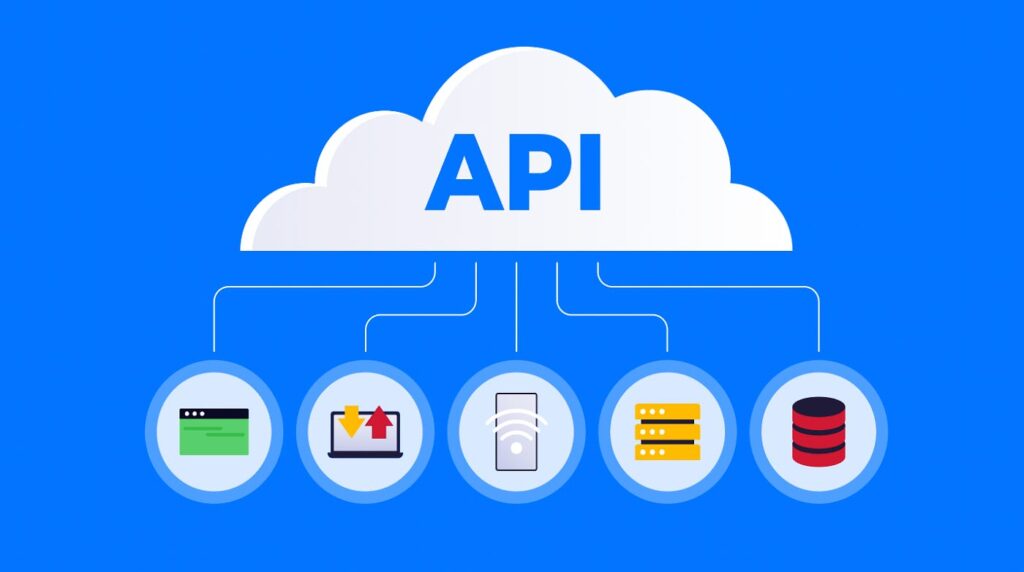
You’ve probably heard the term API thrown around many times in a variety of contexts. Let’s break down what this acronym means.
API (Application Programming Interface) is a set of rules and methods by which different programs exchange data. This happens by sending structured data using standardized channels. It is used when different programs from different operating systems need to successfully and securely transfer complete information to each other, regardless of the technical origin of the applications. In other words, it is a set of specific rules and conditions that applications must follow in order to establish a reliable communication channel between them.
APIs are categorized according to how they’re used:
Internal API: Used only within a company or other infrastructure to transfer information between its employees or services.
Partner API: Access to such an API is granted to a specific group of people, such as business partners. It can be provided free of charge or at a pre-determined price, depending on the agreement or contract. It allows the transfer of necessary and up-to-date information on request through a secure and reliable channel.
Open API: Also known as a public API, which can be accessed by any user. These can be free, conditionally free, or paid open interfaces.
You use public APIs every day when you check the weather online, plan a route using Google Maps, or communicate on social networks or messengers. And the website you use is guaranteed to use a partner API with the issuing bank when you make purchases online.
As you can see, APIs are used almost everywhere. However, the average user doesn’t often need to delve deeply into the technology behind the process.
There are many technical standards for APIs, some major are:
REST (Representational State Transfer)
SOAP (Simple Object Access Protocol)
RPC (Remote Procedure Call)
This is by no means an exhaustive list. There are other standards with narrower specializations or developed for specific application areas.
Some services may use APIs as the only means of interacting with the user, such as an exchange rate service. Other services use APIs as a complement to a full graphical interface. For example, the Google Translate API can accept translation data both from its website and via an API in the form of JSON data. Sometimes an API is needed to provide an alternative data transfer channel that can quickly transfer a large amount of information without the need for visual formatting. Internal APIs are also used to connect elements of an application to a microservice architecture, and are an essential and mandatory part of such a structure.
Advantages of using APIs
Modularity: APIs allow you to divide the functionality of an application into separate modules and assign areas of responsibility. This increases the fault tolerance of your projects.
Scalability: APIs make it easy to add new functionality to an application without breaking existing components. They also allow you to track versions and changes to the protocol and more easily duplicate specific nodes of products.
Compatibility: APIs ensure compatibility between different systems and platforms. This is particularly important for Web applications that need to run on different devices and operating systems.
Disadvantages of APIs:
Inconvenient UI: A pure API does not provide a convenient form for direct user use. To use an API, you need to develop intermediary software with a user-friendly visual interface that can formulate correct requests to the API.
Need for detailed documentation: The API usage interface cannot provide a convenient and consistent description of all product features and capabilities. Using an API means strictly adhering to the format used to transfer data. Describing all capabilities and interface structure requires separately written documentation, which can consume additional developer time and resources.
Speed: Surprisingly, the speed of access to a service can be a definite advantage, but it can also add complexity to project management. High access speed allows attackers to make more requests to the project in an attempt to guess passwords (brute force attack) or overload the service to create a denial of service state. To prevent such vulnerabilities, there are rules and restrictions that protect data from the malicious intentions of third parties.
It’s not always immediately obvious where and when to use an API in a project to increase the speed and reliability of service delivery. With microservice architecture, the decision to integrate an API does not have to be made in advance. The interface can be added to an existing, fully functional project. In microservice architecture, the API is an indispensable part, but different interface standards can be used. The need for its presence, as well as the type and standard, can be determined at the stage of architectural planning, creation or development of your application. Our experienced development teams can integrate any standard and type of API into your project, identifying the optimal method and application area. If you are interested in this technology, contact our managers for a full consultation on the benefits of extending the capabilities of your project.
